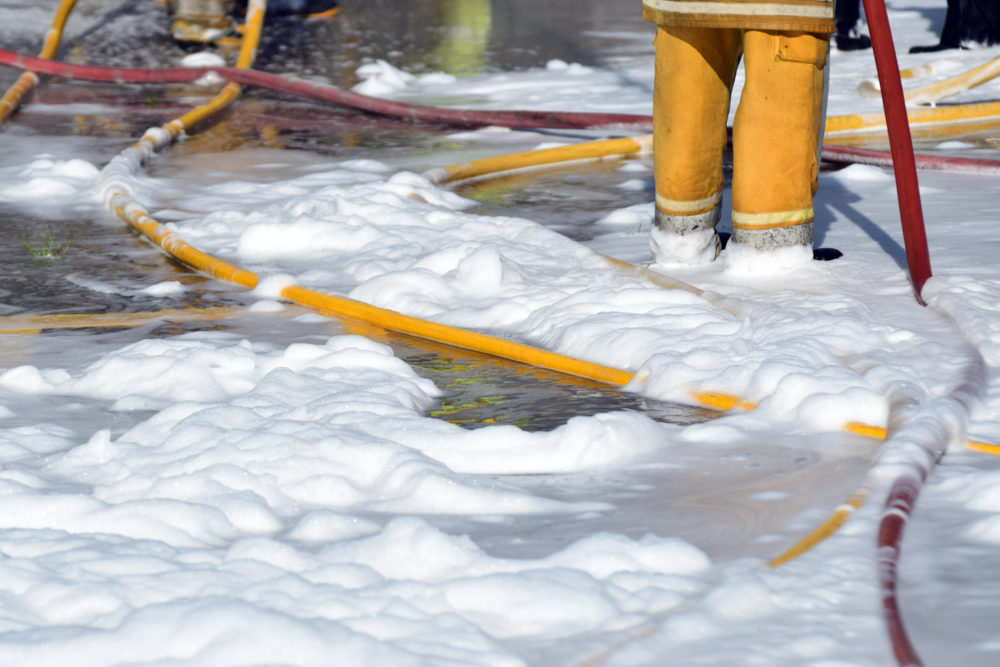Eligible for a Firefighting Foam lawsuit?
Proposed Ban on PFAS Firefighting Foam in E.U. Backed By Risk Assessment Committee
The proposed ban on PFAS in firefighting foam would cost $7.9 billion, which EU regulators say is worth the price of removing the health risks of the toxic chemicals

European chemical regulators are calling for a ban on the use of per- and polyfluoroalkyl substances (PFAS) in firefighting foam, due to the risks of heart disease, reproductive problems and other adverse side effects.
PFAS include over 9,000 man-made chemicals, which have been used for decades in aqueous film-forming foam (AFFF) used to fight petroleum fires, as well as a number of consumer and industrial products, to resist grease, oil, and water. However, they are commonly referred to as “forever chemicals”, since PFAS persist in the environment and human body, building up over time and increasing the risk of a myriad of health problems.
In the U.S., manufacturers of PFAS chemicals and AFFF products currently face hundreds of firefighting foam lawsuits brought by individuals diagnosed with cancer after direct exposure during their careers as a firefighter. In addition, a growing number of PFAS water contamination lawsuits are being pursued by individuals diagnosed with ulcerative colitis or cancer, after regularly drinking water known to contain the chemicals, which have leached into the water supply around military bases, airports and other firefighter training centers.

Firefighting Foam Lawsuits
Lawyers are reviewing aqueous film forming foam (AFFF) lawsuits for firefighters, military personnel and individuals who developed cancer or other health issues from exposure to toxic firefighting foam chemicals.
Learn More SEE IF YOU QUALIFY FOR COMPENSATIONOn March 24, the European Chemicals Agency’s (ECHA) Committee for Risk Assessment announced its support for a proposed ban on the use of PFAS in firefighting foam throughout the European Union. The decision came following a draft opinion issued by the ECHA’s Committee for Socio-Economic Analysis ISEAC) on March 15, which came to similar conclusions.
The ECHA first proposed the ban in 2020, and estimates it will cost $7.9 billion to implement. However, its committees say the price is worth it, due to the health problems from PFAS firefighting foam that could be avoided by preventing 13,000 metric tons of the chemicals from being discharged into European Union waters over the next 30 years.
“PFASs have attracted regulatory scrutiny due to their ubiquitous persistency in the environment. If releases of PFASs are not minimised, humans and other organisms will be exposed to progressively increasing amounts of PFASs until such levels are reached where effects are likely,” the SEAC opinion states. “By then, exposure is practically irreversible.”
The opinions note that PFAS are of particular concern when they infiltrate drinking water sources. The committees noted that some PFAS are suspected carcinogens, and some can cause harm to a developing child, and can cause liver and immune system problems at low levels. Others may be endocrine disruptors. However, the committees warned that the potential risks are not well known due to the lack of data assessing their effects on human health and the environment.
The SEAC is accepting public comment on its opinion until May 15.
Broader EU PFAS Ban Being Considered
The proposed ban on PFAS in firefighting foam is separate from a broader proposed ban or restrictions on all PFAS uses across the EU currently under consideration.
In January, the ECHA announced it had received a proposal calling for heavy restrictions on PFAS from five member nations, including Denmark, Germany, the Netherlands, Norway and Sweden.
The proposed PFAS restrictions, which the ECHA considered some of the broadest in the E.U.’s history, would target the manufacturing, marketing and use of the chemicals throughout the European Union, according to details of the proposal, which were released published on February 7.
The ECHA will turn the proposal over to its Risk Assessment Committee and its Socio-Economic Analysis Committee, who will ensure the proposed restrictions meet the E.U.’s legal requirements, and then begin a scientific evaluation. The committees began a six-month consultation in March.
The two committees generally have opinions ready within a year. However, due to the extent of the proposal and the science involved, the ECHA warns this proposal may take more time.
April 2023 PFAS Firefighter Foam Lawsuit Update
Given common questions of fact and law presented in the U.S. lawsuits over PFAS in firefighting foam, the litigation is currently centralized before U.S. District Judge Richard M. Gergel in the District of South Carolina, for coordinated discovery, pretrial proceedings and a series of early bellwether trials.
Early in the pretrial proceedings, Judge Gergel established a “bellwether” program that started with a group of water contamination cases going through case-specific discovery in preparation for a series of early trial dates, which are expected to begin around June 2023.
If parties do not reach a firefighting foam settlement agreement once the pretrial proceedings and bellwether test trials are completed, or the litigation is not otherwise resolved, individual cases will may be remanded back to their originating federal court districts for trial in the coming years.






0 Comments